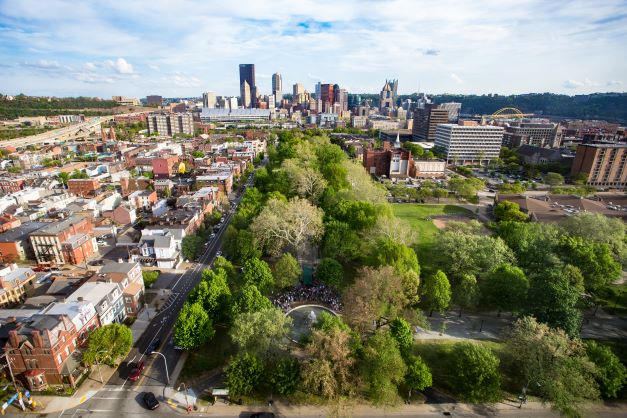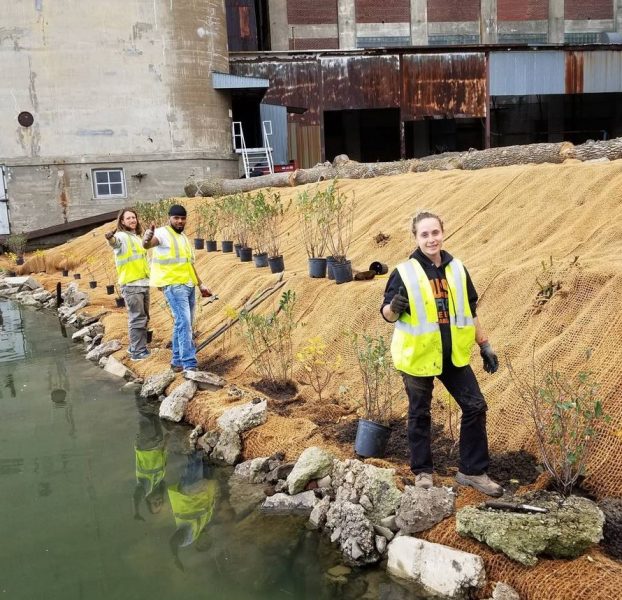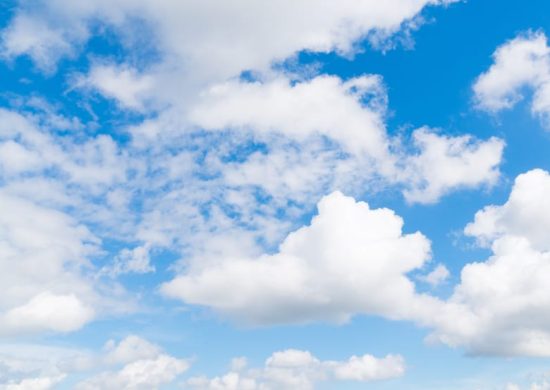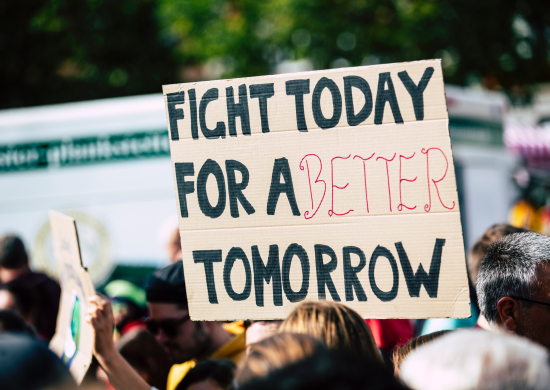In this third installment of our four-part strategic refresh blog series, initiated by Pisces Foundation President David Beckman’s What we are learning blog, Water Program Lead, Sarah Diringer, shares about the evolution of the Foundation’s water program and our work to scale One Water and water equity in cities throughout the United States.
“No water, no life. No blue, no green.” – Sylvia Earle
Water is life. Since before Incan aqueducts at Machu Picchu and Rome’s first underground sewers, access to water has provided the foundation of healthy, vibrant societies. For many, however, water is increasingly a source of loss and heartbreak. In August 2021, Hurricane Ida made landfall in Louisiana, causing catastrophic flooding, resulting in $75 billion in damages and more than 100 fatalities. At the same time, the western U.S. is facing a historic drought with states forced to balance the needs of farms and fish. Benton Harbor, Michigan is relying on bottled water because of lead contamination in drinking water. The parallels with lead contamination in Flint, Michigan are impossible to ignore. While no one is immune to the growing water challenges, decades of disinvestment and intentional marginalization mean these water challenges are affecting communities of color “first, worst, and longest.”
My formal education taught me the science and engineering of these disasters, the balance between too much water and too little, the chemical structures of pollutants, and how to clean them in a treatment system. But environmental justice and the role of race and class in environmental health was only at the periphery of my classroom lessons. In graduate school, I began working with a diverse global health team in Peru focused on the impacts of small-scale, subsistence gold mining – the largest emitter of mercury in the world. We collected and analyzed fish and sediment samples (pictured below) and examined impacts of mining and deforestation on local rivers. My research began as an interest in chemical transformation in river sediment and grew into a deep appreciation for the complex intersections of environmental and community health.
 Photo provided by Sarah Diringer
Photo provided by Sarah Diringer
Understanding and valuing the interconnections among complex environmental, engineered, and social systems is the basis of how I believe we need to solve our biggest water challenges. Civil and environmental engineers, like myself, have often approached water infrastructure with what we consider a systems lens. For example, our drinking water infrastructure includes vast storage and conveyance networks, treatment facilities, and distribution to households. However, this lens is often overly narrow, focusing on solving one water challenge at a time while divorcing it from people and the complex environmental and social interconnections that need to be considered. As a result, environmental impacts, public health, water governance, funding, decision making, and policy are often siloed – for example, separating drinking water supply planning from stormwater and flooding, or water quality from land-use planning and environmental conservation. Expanding the lens to include the broader system, breaking down these silos and building collaboration are key to shaping a sustainable, equitable water future.
One Water: A Holistic and Inclusive Approach to Water Management
When the Pisces Foundation started, the team had a substantial interest in water, as well as experience facing traditional water management approaches that didn’t adequately value or elevate the real connections between variables. That’s why the water program, instead of focusing on one or several iconic waters, or regions, for example, focused on accelerating efforts to meet the water needs of people and nature throughout the U.S. through more integrated, systemic approaches, now often referred to as “One Water.” The water program remains committed to helping ensure One Water strategies become the standard approach to water management in cities throughout the U.S.
 Photo Credit: Pittsburgh Park Conservancy
Photo Credit: Pittsburgh Park Conservancy
The phrase “One Water” recognizes that water is intimately linked to everything. Thus, solving water challenges must rely on a systems lens that considers the interconnectivity of water challenges and solutions. One Water seeks to solve multiple challenges simultaneously and to acknowledge the people and environments at the center of the broader system. The commonality among One Water solutions is that they examine natural and human-made water systems holistically and examine how integrated water solutions can play a critical role in building sustainability and resilience.
One Water solutions are also as diverse as the communities that they serve. In some regions, One Water might include sustainable landscapes that improve water efficiency while simultaneously creating community greenspace and reducing stormwater runoff into local waterways. In other regions, these solutions might include water reuse infrastructure that cleans wastewater, recharges aquifers, and reduces land subsidence.
Our current Urban Water grantee partners are institutionalizing these solutions throughout the U.S. Our partners in Newark, NJ and Pittsburgh, PA are implementing green stormwater infrastructure that recaptures and treats urban runoff to reduce combined sewer overflows and water contamination, while providing green space and green jobs in low-income neighborhoods. In Austin, TX, our partners are working to implement a 100-year water plan – including a focus on water efficiency and water reuse – to ensure communities and nature have enough water into the future. In Colorado, partners are working to transform the High Line Canal as a stormwater management system and recreational amenity. These integrated solutions are increasingly common throughout the country, but they are not yet standard.
In addition to changing water management infrastructure and systems, advancing One Water requires a commitment to changing traditional decision making. Elevating water equity means bringing communities, and particularly historically marginalized communities, to the decision-making table. For example, our partners in the Great Lakes region are focused on amplifying community voices through local task forces that work directly with decision makers to advance more equitable water policy. We are focused on both scaling the infrastructure and policies necessary for One Water strategies, as well as achieving more inclusive and equitable water decision making.
What We’re Learning
With the goal of helping to ensure that One Water strategies become the norm in the U.S., our strategy reflects a systems approach that our Foundation seeks to elevate in each program. This systems lens is one of three important themes that emerged from a triennial review of our work, along with two other integrally related ideas: embedding equity into all aspects of our work and supporting movements and power building.
Embedding Diversity, Equity, and Inclusion: Water equity is at the heart of a successful transformation to One Water. Every person deserves access to safe, clean, affordable water and thriving ecosystems. Yet, many communities, particularly communities of color, remain severely impacted by water challenges. For example, we know that the risks of flooding are greater in communities of color as a result of systemic racism in zoning, housing, and community development. Integrated water solutions must be prioritized for communities that have been historically excluded from water infrastructure planning and investment.
Water equity is not, however, just an outcome of safe, clean, affordable water, access to green space and waterways, or resilience to flooding; it necessitates a process that empowers communities to develop solutions that reflect their own needs and values. Water challenges often manifest locally. For this reason, it is critical that we support deep community engagement from those both most affected and most knowledgeable about the challenges they are facing.
 Photo Credit: PUSH Blue @pushbluewny
Photo Credit: PUSH Blue @pushbluewny
Movement and Power Building: One Water is advancing in part because a coalition of diverse leaders have come together, inspired by a vision of a better, equitable, and sustainable water pathway. These leaders know that transforming water throughout the country will rely on more movement building through coalitions and networks, formal and informal, that generate greater power through their collaboration and alignment on achieving key goals. But, philanthropic funding for movements and power-building remains inadequate. Pisces is committed to continuing – and increasing – our support for these efforts, including greater support for frontline organizations building power within their communities.
Transformation is not easy nor swift. But, as climate change continues to exacerbate water challenges throughout the country, it is essential that we move swiftly to support the water movement in advancing One Water and water equity.
What’s to Come
As we near the 50th anniversary of the Clean Water Act, the bedrock U.S. legislation protecting the environment and communities from pollution, we need to accelerate action toward integrated, equitable, and sustainable water solutions. The water program is committed to continuing to support champions advancing One Water throughout the country to ensure people and nature have the water they need to thrive, now and into the future.
Recognizing the need for diverse approaches and diverse voices, the water program is looking ahead to developing our second Request for Proposals (RFP), an open opportunity for organizations throughout the country to share proposals with us to advance water solutions in cities. We look forward to sharing more information in the near future as the RFP develops. I am looking forward to opportunities to meet our partners throughout the country and support a strong, equitable movement toward One Water.



